Mirrorless cameras – also known as compact system cameras – are now big business and no longer the plucky upstart. Gone are the days where the DSLR was king. The best mirrorless camera to buy obviously depends on your skill level and favourite subject matter. But overall you’ll be looking for something small and portable, with an EVF, fast and accurate autofocus and great image quality. Sounds too good to be true? Not these dates.
Mirrorless cameras have steadily won an increasing share of the camera market. This is because photographers now recognise the benefits of using mirrorless cameras, namely their smaller design and an electric viewfinder that lets you see the impact of camera settings.
There are now mirrorless cameras to suit every kind of photographer, including professionals. As with DSLRs, specs can vary greatly between different mirrorless cameras, making something which is suitable for one photographer not particularly suitable for another.
Types of mirrorless cameras
At one point in time the best mirrorless cameras were simply those that existed from the few manufacturers making them. But these days nearly every manufacturer has a mirrless offering, and they run the gamut from entry-level models to professional options to mirrorless medium format cameras. Options include:
- Micro Four Thirds Mirrorless Cameras
- APS-C Mirrorless Cameras
- Full-Frame Mirrorless Cameras
- Medium Format Mirrorless Cameras
Each of these options has its own benefits (and costs), depending on what you intend to shoot. We’ll explain these below. To make it easy to see the best mirrorless cameras for your needs as a photographer, we’ve indicated who is best suited to each camera and why based on our experiences testing these models.
The best mirrorless cameras you can buy today
All of the mirrorless cameras we’ve recommended below are based on our tests and experience of using them. We’ve broken them down into groups of the best mirrorless cameras by type to help you choose the right model for your needs.
For a deeper dive into the many different camera types and features available, check out our range of camera buying guides.
Full-frame mirrorless cameras
The dawn of the full-frame mirrorless camera was so exciting because, generally speaking, cameras with a full-frame sensor offer better image quality than those with smaller sensors. Naturally, having a larger sensor means the cameras and lenses tend to be bigger, but we’ve seen some impressive downsizing in recent years.
A full-frame sensor is the size of a traditional 35mm film negative, and twice the size of an APS-C sensor. Where once full-frame was only the domain of the professional, cheaper prices mean that enthusiasts often plump for these models too.
For more information on this format, check out our guide to the best full-frame cameras you can buy today.
Fujifilm X-M5
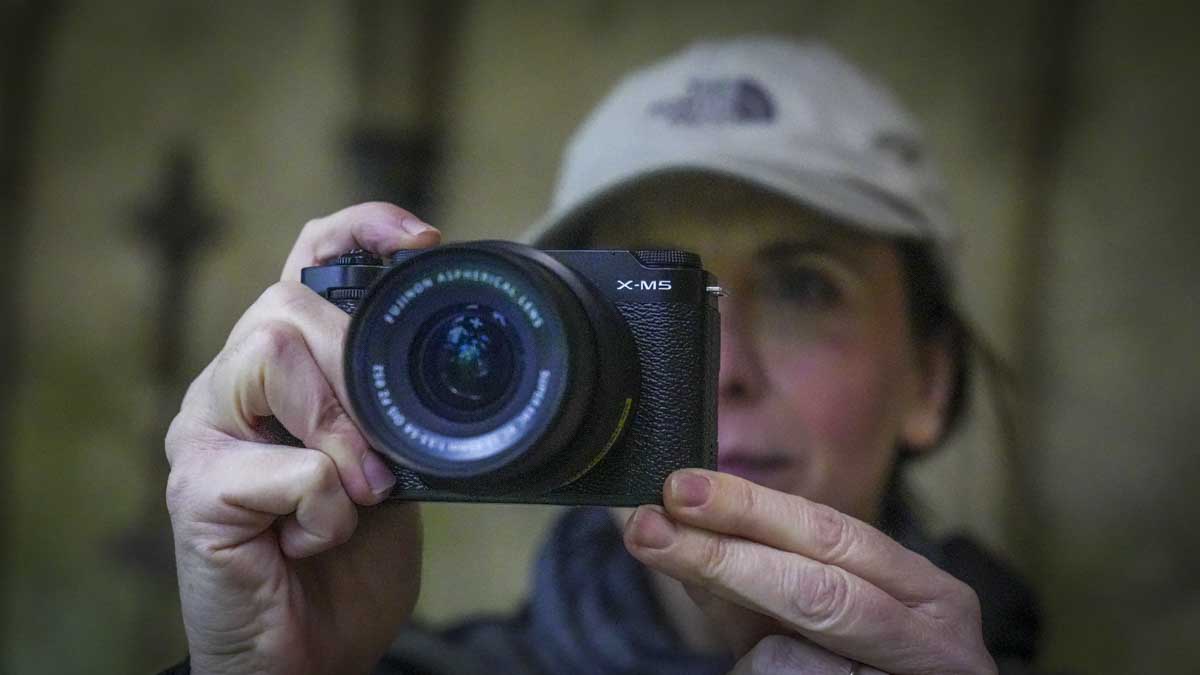
Specification
- Sensor: 26.1MP APS-C X-Trans CMOS 4 sensor
- Processor: X-Processor 5
- ISO Range: 160–12,800 (expandable to 80–51,200)
- Autofocus System: Intelligent hybrid autofocus (contrast and phase detection), Subject detection modes for animals, vehicles, and more
- Continuous Shooting: Up to 15 fps with mechanical shutter, 20 fps with electronic shutter
- Video Recording: 6.2K at 30p, 4K at 60p, Full HD at 240p for slow-motion capture
- Film Simulation Modes: 20 presets including Classic Chrome, Provia, Velvia
- Image Stabilisation: 5-axis in-body image stabilisation (IBIS) up to 7 stops
- EVF: 2.36-million-dot OLED electronic viewfinder
- LCD Screen: 3.0-inch 1.84-million-dot fully articulated touchscreen
- Weight: Approximately 355g (including battery and memory card)
- Dimensions: 123.5mm x 85.2mm x 44.5mm
£899
$899For
- Compact
- Packed with features
- Quick-access film modes
Canon EOS R5
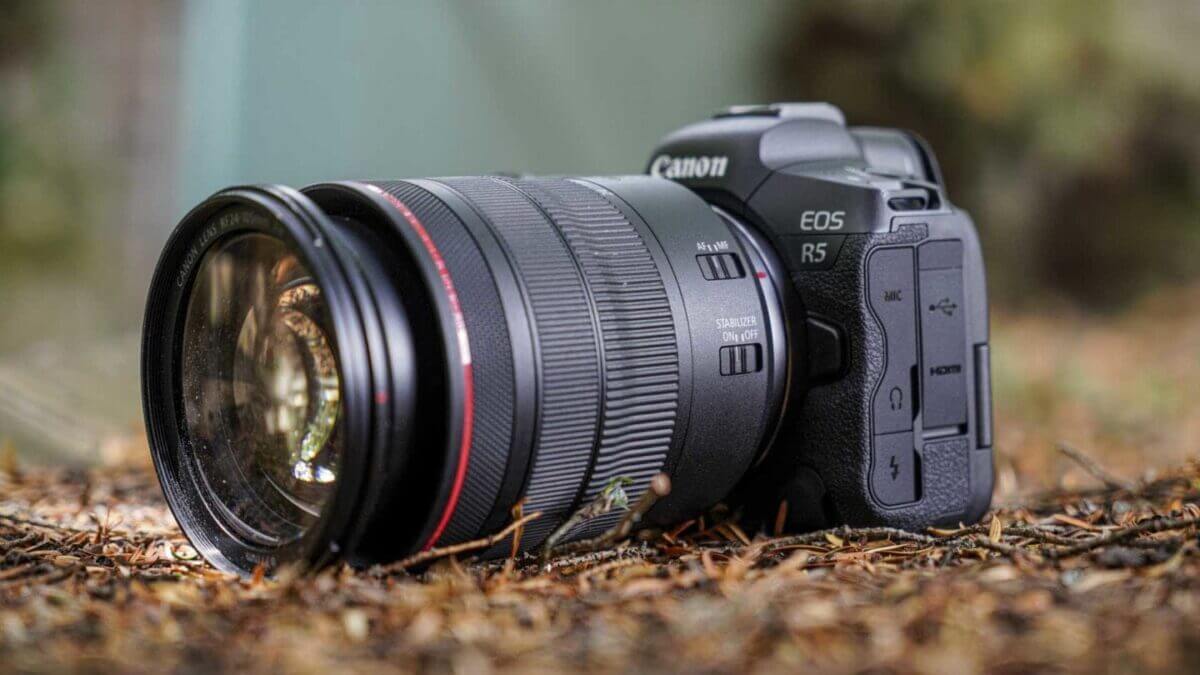
Specification
- Camera Type: Mirrorless
- Announced: 9th July 2020
- Sensor: 45Mp Full-frame Dual Pixel CMOS AF II
- Processor: Digic X
- Lens mount: RF
- Sensitivity range: Stills: ISO 100-51,200 expandable to ISO 50-102,400, Movies: ISO 100-25600, expandable to ISO ISO 51,200
- Metering: 384-zone metering with Evaluative metering (linked to All AF points), Partial metering (approx. 6.1% of viewfinder at centre), Spot metering: Centre spot metering (approx. 3.1% viewfinder at centre), Centre weighted average metering
- Shutter speed range: 1/8000sec-30 seconds and Bulb
- File formats: Raw + Jpeg/HEIF, MP4
- Maximum continuous shooting rate: Mechanical shutter: 12fps, Electronic shutter: 20fps
- Maximum video resolution: Uncropped, internal raw recording 8K video at up to 29.97fps in 4:2:2 10-bit in Canon Log (H.265) or 4:2:2 10-bit HDR PQ (H.265), Uncropped internal recording 4K video at up to 119.88fps in 4:2:2 10-bit in Canon Log (H.265) or 4:2:2 10-bit HDR PQ (H.265) 4:2:2 10-bit in Canon Log or 4:2:2 10-bit HDR PQ, 4K output over HDMI at up to 59.94fps
- Autofocus system: Dual Pixel CMOS AF II phase detection with 5940 points in stills and 4500 points in movie mode
- Viewfinder: 0.5-inch 5.76million-dot OLED electronic viewfinder with 120fps display and 0.76x magnification
- Screen: 3.15-inch 2.1-million dot vari-angle touchscreen
- Autofocus: Dual Pixel CMOS AF II with Advanced Animal AF (recognising dogs, cats and birds) supported in all video modes with 100% coverage and up to 1053 'AF segments'
- Stabilisation: In-body image stabilisation (IBIS) that works with lens IS and enables up to 8-stops of shutter speed compensation
- Storage: Dual slots, 1x CFexpress, 1x SDXC UHS-II
- Dimensions: 135.8 x 97.5 x 88mm
- Weight: 650 g / 738 g with card and battery
Although its position was technically usurped by the Canon EOS R3, the Canon EOS R5 is Canon’s flagship mirrorless camera and it was the most exciting camera announced in 2020.
Its 8K video capability stole most of the headlines when it was revealed, but the Canon R5 is at heart a 45Mp stills camera with an incredible autofocus system. This Dual Pixel CMOS AF II system has 5,940 selectable AF points and superb eye detection AF for humans, animals and birds that works in both video and stills mode.
Like the Canon EOS R6 announced at the same time, the EOS R5 has 5-axis in-body image stabilisation. In the R5 it enables shutter speed compensation of up to 8EV.
Canon pitches the R5 at around the same level as the Canon EOS 5D Mark IV, which means it’s designed for use by experienced enthusiast and professional photographers. It combines a healthy collection of button and dial controls with an excellent touch-control interface on the 3.15-inch 2.1-million dot vari-angle screen.
While 8K video is of limited appeal, the R5 is capable of producing superb results with the 4K HQ (High Quality) mode especially impressing. The still image quality is also excellent all the way up to around ISO 25,600.
Find the latest deals on the Canon EOS R5 at Amazon UK and Amazon US.
£4199
$3899For
- 45Mp full-frame sensor with full AF coverage
- 12fps/20fps continuous shooting with continuous AF
- Uncropped internal 8K video recording for up to 20 minutes
Canon EOS R6

Specification
- Camera Type: Mirrorless
- Announced: 9th July 2020
- Sensor: 20Mp Full-frame Dual Pixel CMOS AF II
- Processor: Digic X
- Lens mount: RF
- Sensitivity range: Stills: ISO 100-102,400 expandable to ISO 50-204,800, Movies: ISO 100-6,400, expandable to ISO 204,800
- File formats: Raw + Jpeg/HEIF, MP4
- Maximum continuous shooting rate: Mechanical shutter: 12fps, Electronic shutter: 20fps
- Maximum video resolution: 4K video at up to 60fps, Full HD at up to 120fps. 4K video crop: 1.07x at 25p (1.19x with the Digital IS on), 1.52x at 60p
- Autofocus system: Dual Pixel CMOS AF II phase detection with 6,072 points in stills and 4968 points in movie mode
- Viewfinder: 0.5-inch 3.69million-dot OLED electronic viewfinder with 120fps refresh rate
- Screen: 3-inch 1.62-million dot vari-angle touchscreen
- Autofocus: Dual Pixel CMOS AF II with Advanced Animal AF (recognising dogs, cats and birds) supported in all video modes with 100% coverage and up to 1053 'AF segments'
- Stabilisation: In-body image stabilisation (IBIS) that works with lens IS and enables up to 8-stops of shutter speed compensation
- Storage: Dual slots, 2x SDXC UHS-II
- Dimensions: 138.4 x 97.5 x 88.4mm
- Weight: 598g / 680 g with card and battery
Canon is billing the EOS R6 as a mirrorless blend of the full-frame 26.2Mp EOS 6D Mark II and the APS-C format 20.2Mp EOS 7D Mark II. Some Canon 6D Mark II photographers might be a little disappointed in taking a 6Mp drop in resolution to switch the R6, but, the Canon R6 handles noise considerably better than the 6D Mark II.
It may not have a class-leading resolution but the Canon EOS R6 is a phenomenally good stills camera. Its autofocus system is fantastic and it can keep track of fast subjects moving in random directions with ease while shooting at 20 frames per second. In addition, the build quality and handling is extremely good, making it a delight to use.
Although it lacks the R5’s ability to shoot 8K video, the Canon R6 can record 4K UHD (3840 x 2160) at up to 59.94fps and Full HD video at up to 119.88fps. What’s more, its full-frame sensor has a similar design to that of the Canon EOS-1D X Mark III, and it can shoot completely silently at up to 20fps with continuous autofocusing and exposure metering. That’s pretty enticing.
£2500
€2899.99For
- Similar 20Mp full-frame sensor to the Canon EOS 1D X Mark III
- 12fps/20fps continuous shooting
- Superb autofocus system
Nikon Z7 II
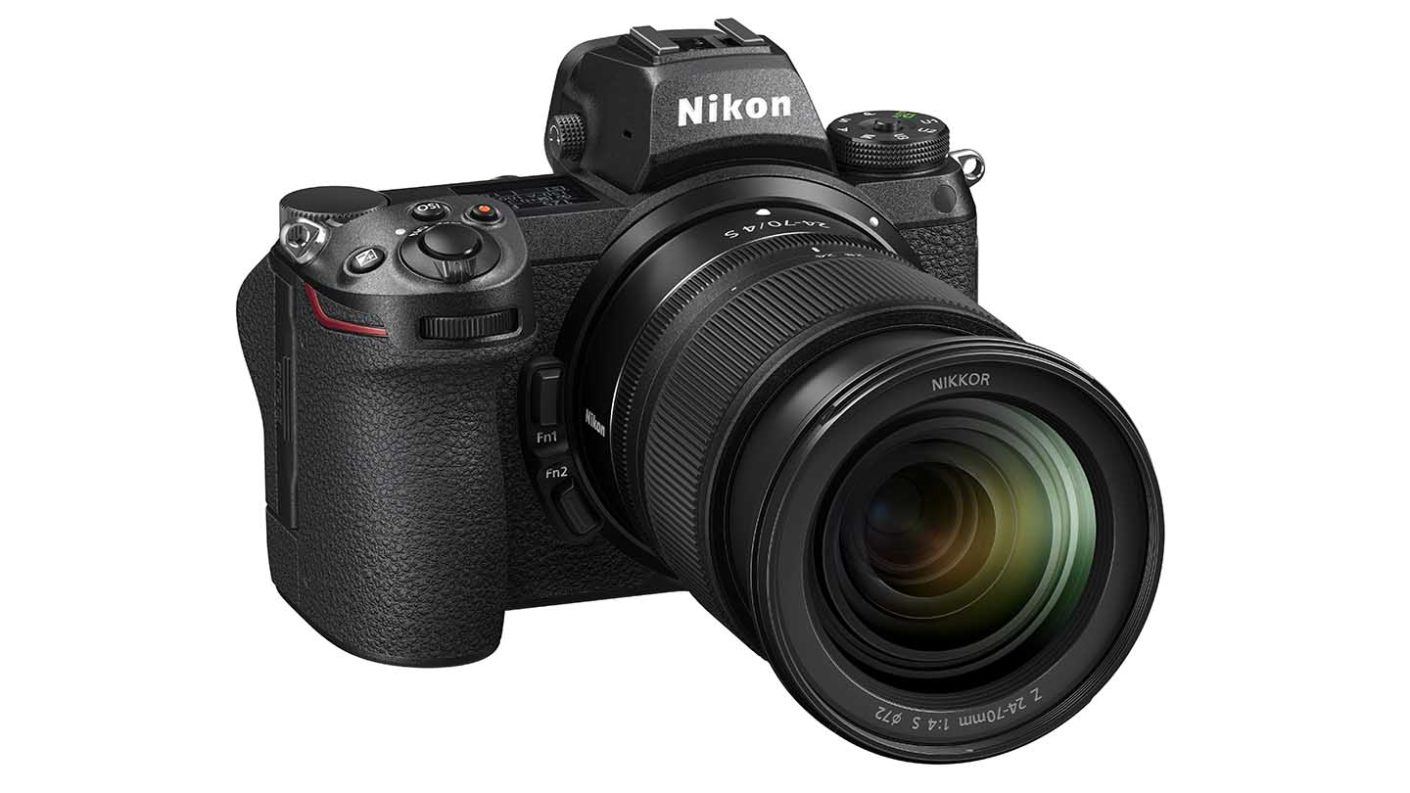
Specification
- Camera type: Full-frame mirrorless camera
- Announced: 14th October 2020
- Lens mount: Nikon Z
- Sensor: Full-frame (FX 35.9 x 23.9mm) 45.7MP backside illuminated (BSI) sensor
- Processing engine: Dual Expeed 6
- Stabilisation: 5-axis in-body VR
- Sensitivity: ISO 64-25,600, expandable to ISO 32-102,400
- Maximum continuous shooting rate: 10fps for up to 200Jpegs or 77 12-bit uncompressed raw files, 9fps with 14-bit raw files
- Autofocus system: Hybrid with phase and contrast detection
- Phase detection points: 493
- Video resolution: 4K (3840 x 2160) 60/50/30/25/24p, Full-HD (1920 x 1080) 120/100/60/50/30/25/24p, Slow-motion mode 1920 x 1080 30p x4/25p x4/24p
- Viewfinder: 0.5-inch 3.69-million-dot electronic viewfinder
- Screen: 3.2-inch 2,100,000-dot tilting touch-screen
- Storage: Dual slot 1 XQD/CFexpress and 1 SD/SDHC/SDXC
- Dimensions (W x H x D): 134 x 100.5 x 69.5mm / 5.3 x 4 x 2.8-inches
- Weight: 705g with battery and memory card but without body cap, 615g body only
While the 45.7Mp Nikon Z7 II has a lot in common with the excellent Nikon Z7 and uses much of the same technology (including the same sensor), the mark II camera has a second memory card slot which means it addresses the main concern that photographers had about the original camera. One slot accepts XQD or CFexpress cards while the other is for SD-type cards and is UHS-II compliant
Nikon also doubled the Z7 II’s processing power in comparison with the Z7 II by giving it two Expeed 6 processing engines. This enabled a boost in the continuous shooting rate from 9fps to 10fps and enables 4K shooting at 60P.
That extra processing power also enables Eye-detection AF for humans and animals in video mode as well as stills, and enhances the low-light capability of the autofocus system.
The Nikon Z7 II has the same build and handling as the Z7, Z6 and Z6 II, and it’s the best interface available in a Nikon camera to date.
You can find the latest deals on the Nikon Z7 II at Amazon UK and Amazon US.
£2999
€3442 / $2996.95For
- High-quality sensor
- Excellent user interface and control layout
- Weatherproof build
Nikon Z6 II
Specification
- Camera type: Full-frame mirrorless camera
- Announced: 14th October 2020
- Lens mount: Nikon Z
- Sensor: Full-frame (FX 35.9 x 23.9mm) 24.5MP backside illuminated (BSI) sensor
- Processing engine: Dual Expeed 6
- Stabilisation: 5-axis in-body VR
- Sensitivity: ISO 100-51,200, expandable to ISO 50-204,800
- Maximum continuous shooting rate: 14fps for up to 200Jpegs or 124 12-bit uncompressed raw files
- Autofocus system: Hybrid with phase and contrast detection
- Phase detection points: 273
- Video resolution: 4K (3840 x 2160) 30/25/24p (60P to come with free firmware update in Feb 2021), Full-HD (1920 x 1080) 120/100/60/50/30/25/24p, Slow-motion mode 1920 x 1080 30p x4/25p x4/24p x5
- Viewfinder: 0.5-inch 3.69-million-dot electronic viewfinder
- Screen: 3.2-inch 2,100,000-dot tilting touch-screen
- Storage: Dual slot 1 XQD/CFexpress and 1 SD/SDHC/SDXC
- Dimensions (W x H x D): 134 x 100.5 x 69.5mm / 5.3 x 4 x 2.8-inches
- Weight: 705g with battery and memory card but without body cap, 615g body only
While it has the same 24.5Mp backside-illuminated full-frame sensor as the original Nikon Z6, the Nikon Z6 II has two Expeed 6 processing engines instead of one. Nikon also added an SD/SDHC/SDXC (UHS-II) card slot alongside the XQD/CFexpress card slot of the original camera to address one of the concerns that many photographers raised about the original camera.
Thanks to the extra processing power, the Z6 II has a maximum continuous shooting rate of 14fps, 2 fps higher than the Z6, with full autofocus and metering capability. That rate can be maintained for 200 Jpegs or 124 uncompressed 12-Bit raw files.
Like the Z6, the Z6 II has a native sensitivity range as the Z6, ISO 100-51,200 (expandable to ISO 64-204,800) and a 273-point hybrid focusing system that covers 90% of the sensor.
However, the tracking and low-light AF performance of the Z6 II has been improved and the newer camera can focus at -6EV with an f/2 or faster lens.
In addition, the Z6 II’s human and animal eye AF operates in video mode as well as in stills mode.
You can find the Nikon Z6 II on eBay, John Lewis & Partners, Wex Photographic and Amazon UK and Amazon US.
£1999
€2262For
- High-quality sensor
- Excellent user interface and control layout
- Weatherproof build
Sony A7 III
Specification
- Announced: 26th February 2018
- Camera type: Full-frame mirrorless
- Sensor: 24.2Mp Full frame (35.6×23.8mm), Exmor R CMOS sensor
- Processor: Bionz X
- Lens mount: Sony E
- Sensitivity range: Stills: ISO 100-51,200, expandable to 50-204,800, Video: ISO 100-51,200, expandable to 100-102,400
- Maximum continuous shooting rate: 10fps with full AF and metering
- Maximum video resolution: 4K (3840 x 2160)
- Autofocus system: Hybrid with 693 phase detection points and 425 contrast detection points
- Viewfinder: 0.5-inch OLED with 2,359,296 dots
- Screen: 3-inch 921,600-dot tilting touchscreen
- Storage: Dual Slot, Slot 1: SD (UHS-I/II), Slot 2: Multi slot for Memory Stick Duo/SD (UHS-I)
- Dimensions (W x H x D): 126.9 x 95.6 x 73.7mm
- Weight: 650g
The Sony A7 III is the ‘all-rounder’ in the third generation of Sony A7-series of full-frame cameras. It’s aimed at enthusiast photographers but it has features that will also keep many professional photographers happy. It also has a good collection of video specifications (including S-Log3 gamma and clean HDMI output), which means it can be used for professional shoots as well as for fun.
While the A7 III doesn’t have exactly the same autofocus system as the Sony A9, that requires the same sensor, it has the same number of autofocus points: 69 phase-detection points and 425 contrast AF points.
These points cover 93% of the imaging area. This makes it easier than with the A7 II to track moving subjects. In addition, the system is sensitive down to -3EV, which means it should be effective in low light.
There’s also Sony’s Eye AF mode that helps you target the most important part of a portrait subject.
In addition to its excellent autofocus performance, the Sony A7 III is capable of capturing a wide range of tones and images have plenty of detail while noise is controlled well throughout the native sensitivity (ISO) range.
Find the latest deals on the Sony A7 III at Amazon UK and Amazon US.
£1699
$1999For
- Good-quality 24Mp full-frame sensor
- Excellent autofocus system
- Attractively priced in the full-frame market
Sony A7R IV

Specification
- Camera type: Full-frame mirrorless
- Announced: 16th July 2019
- Sensor: 61MP BSI full-frame sensor
- Lens mount: Sony FE
- Autofocus system: Hybrid with 567 phase detection + 425 contrast detection AF points
- Continuous Shooting: 10fps burst shooting with full AF / AE Tracking
- Video: 4K video with S-Log2/3, HDR
- Sensitivity range: Still images: ISO 100-32000 (expandable to ISO 50 to ISO 102400) Movies: ISO 100-32000
- Viewfinder: 0.5 type 5,760,000-dot OLED
- Screen: Tilting 3-inch 1,440,000-dot touchscreen
- Storage: 2x SD/SDHC/SDXC UHS-II
- Battery: Rechargeable NP-FZ100 battery supplied, Life Stills: 530 shots (viewfinder) / 670 shots (LCD), Movies: 90mins (viewfinder) / 105mins (LCD)
- Dimensions (WxHxD): 128.9 x 96.4 x 77.5mm
- Weight: 665 g / 1lb 7.5oz with battery and SD card
The Sony A7R Mark IV’s 61-million-pixel 35mm sensor is a world first, which the company says delivers ‘medium format quality’.
The sensor is back-side illuminated, and it provides 15 stops of dynamic range. As well as 61-megapixel images, the Sony A7R Mark IV can also produce images with 26 million pixels in APS-C crop mode.
What’s more, its revampled Pixel Shift Multi-Shooting mode can produce images at 240-megapixel resolution. It does this by capturing 960 megapixels worth of data from 16 images, which it then composites together using Sony’s Imaging Edge software.
The A7R Mark IV boasts 567 phase-detection AF points in full-frame mode, which cover 74% of the frame. In the camera’s APS-C mode it has 325 AF points which then cover nearly the entire frame. There’s also Sony’s excellent AI-driven Real-time Eye AF (for humans and animals ins stills mode) and Real-time Tracking modes, which is invaluable for portrait, wedding, sport, pet and social photography.
Depsite its high resolution, the Sony A7R IV is also built for speed and can capture full-resolution 61-megapixel images in continuous shooting mode at up to 10fps, and up to 68 images per continuous burst.
Also among its key features is 5.5-stop, 5-axis in-body image stabilisation, wireless tethering capability, faster USB connection, 802.11ac Wi-Fi plus Bluetooth and studio lighting support.
It all adds up to make the Sony A7R IV one of the best cameras available right now.
Find the best deals on the Sony A7R IV at Amazon UK and Amazon US.
£3500
$3500For
- Superb detail resolution
- Excellent autofocus system
- High-resolution electronic viewfinder
Panasonic Lumix S5
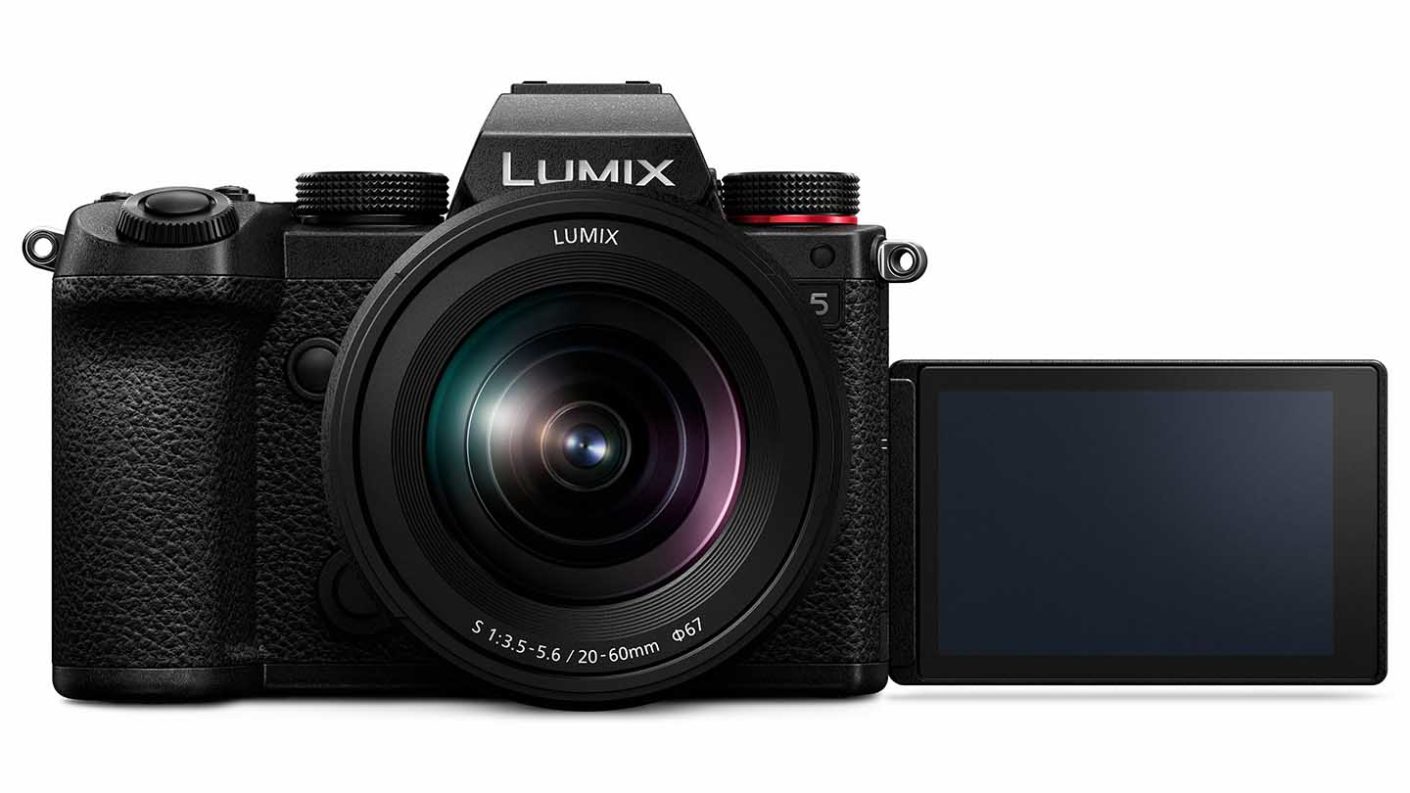
Specification
- Camera type: Mirrorless
- Announced: 2nd September 2020
- Sensor: 24.2Mp full-frame (35.6 x 23.8mm) CMOS sensor
- Lens mount: L
- Construction: Magnesium alloy with dust and splash resistant seals
- Stabilisation: 5 axis in-body IS to 5EV, 6.5 with Dual IS
- Screen: 3-inch 1,840,000-dot vari-angle touchscreen
- Viewfinder: 2,360,000-dot OLED electronic viewfinder with 0.74x magnification
- Key video specifications: 4K (3840x2160) 4:2:2 10-bit LongGOP H.264 29.97/23.98p/25p and 150Mbps for up to 30mins, 4K (3840x2160) 4:2:0 8-bit LongGOP H.264 29.97/23.98p/25p and 100Mbps unlimited, Full HD (1920x1080) 4:2:2 10-bit LongGOP H.264 59.94/29.97/23.98p/50/25p and 100Mbps unlimited
- Slow & Quick motion: Slow: 4K up to 60p in MP4, FHD up to 120p at full width or 180p with narrower angle of view, Quick: 4K to 1p
- Sensitivity: Dual native ISO 100, 6400, Range: ISO100-51,200, expandable to ISO 50-204,800. Dual-native ISO for video
- Shutter speed: 60-1/16,000sec, Bulb to 30mins
- Maximum continuous shooting rate: AF-S or manual focus: 7fps, AF-C: 5fps, 6K Photo 30fps, 4K Photo: 60fps
- Memory: Dual SD card slots, 1 UHS-II, 1 UHS-I
- Weight: 714g with memory card and battery
- Dimensions (WxHxD): 132.6x97.1x81.9mm
Panasonic decided to address some of the criticisms of its S1-series of full-frame mirrorless cameras with the S5 and made it significantly smaller and more affordable. In fact, the Panasonic S5 is smaller than the Micro Four Thirds Panasonic GH5.
Panasonic also completely reworked the S5’s autofocus algorithm to make it more responsive. That work paid off, making the S5 a good choice for general photography and videography, but it’s not quite as snappy as the phase-detection AF systems in cameras like the Canon EOS R6 and Sony A7 III.
The S5 is aimed at people who have started out as photographers and content creators and who want to create more video. Its headline video specification is that it can shoot 4K (3840×2160) footage in 4:2:2 and 10-bit LongGOP H.264 at 29.97/23.98p/25p. That’s when recording internally to an SD-type card.
It can shoot at that quality and resolution for up to 30 minutes, but if you drop to 4:2:0 8-bit 4K footage, it can record indefinitely until the memory cards are full.
In summary, the Panasonic Lumix S5 is a very nice all-rounder that captures attractive stills and video.
£1799
$1998For
- Smaller than the MFT Lumix GH5
- Viewfinder and vari-angle touchscreen
- V-log pre-installed
APS-C mirrorless cameras
APS-C mirrorless cameras are a popular choice for photographers because they are smaller and lighter than most full-frame cameras, and they allow you to fill your frame with your subject from a greater distance. Although not as large as a full-frame sensor, APS-C sensors are larger than most other types, including Four Thirds, one-inch, and the smaller sensors found in the average mobile phone. This means you get advantages such as better noise control and greater depth of field, without the bulk of a full-frame camera.
APS-C is short for Advanced Photo System Type-C, which was a late addition to to film photography. The Advanced Photo System was a new size of film negative that measured 25.1mm x 16.7mm and provided a 3:2 image aspect ratio. For more information, read our guides on the best APS-C cameras you can buy today and when to use APS-C lenses instead of full-frame.
Fujifilm X-T30
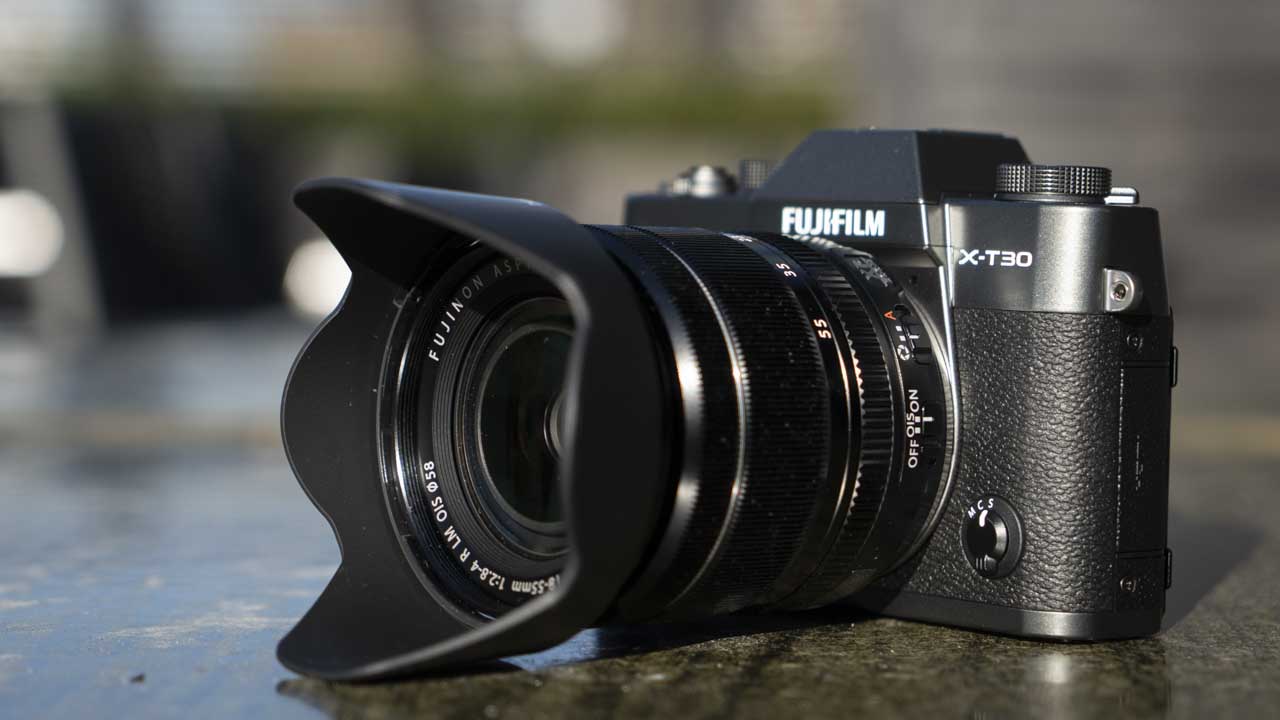
Specification
- Camera type: APS-C format mirrorless
- Sensor: 23.5mm×15.6mm (APS-C) X-Trans CMOS 4
- Lens mount: Fujifilm X
- Autofocus system: Intelligent Hybrid AF (TTL contrast AF / TTL phase detection AF)
- Phase detection AF pixels: 2.16m
- Viewfinder: Electronic 0.39 inch approx. 2.36 million dots OLED Colour
- Screen: 3.0-inch 1.04 million dots touchscreen with 100% coverage
- Dimensions (WxHxD): 118.4 x 82.8 x 46.8mm / 4.66 x 3.26 x 1.84-inch
- Weight: 383g / 13.5 oz. including battery and memory card, 333g / 11.8 oz body only
One of the big upgrades with the Fuji X-T30 over the X-T20 is that it enables a better AF system. For instance, there are 2.16 million pixels used for phase detection autofocusing rather than 0.5 million. This gives 100% coverage with AF points.
Each AF point also benefits from 4x as much data.
According to Fuji, this, the new processing engine, an improved algorithm and the BSI design of the sensor combine to make the AF system sensitive down to -3EV.
Fujifilm has also worked on the Face & Eye Tracking system. It’s now faster and more stable than the X-T20’s. The X-T30’s exposure is less likely to fluctuate when a face is detected.
In addition, smaller or more distant faces can be detected. Previously a face needed to occupy at least 10% of the vertical space. The X-T30 can detect faces that take-up just 7% of the space.
As before, there’s a menu section dedicated to customising the continuous Autofocus (AF-C) settings. This doesn’t offer quite as much control as the X-T3, but it’s a nice feature to have. There are 5 preset options that let you tailor the camera’s AF response.
Fujifilm X-S10

Specification
- Camera type: Mirrorless
- Announced: 15th October 2020
- Sensor: 26.1MP X-Trans CMOS 4 APS-C sensor
- Processing engine: X-Processor 4
- Lens mount: X-Mount
- Sensitivity range: ISO 160-12,800 expandable to ISO 80-51200
- Viewfinder: 2.36-million-dot EVF (100% coverage) with 0.62x magnification
- Screen: Vari-angle 3-inch 1.04million-dot touchscreen LCD
- Autofocus system: Intelligent hybrid with up to 425 selectable AF points
- Continuous shooting: Mechanical Shutter: 8fps, Electronic Shutter: 20fps continuous shooting at full resolution with AF
- Max video resolution: DCI 4K (4096 x 2160) at 29.97/25/24/23.98fps, 4K/30p 4:2:0 8-bit, 4K/30p 4:2:2 10-bit video via the HDMI, Full-HD at up to 240p
- Storage: SD/SDHC/SDXC UHS-II
- Dimensions (WxHxD): 126.0x85.1x65.4mm
- Weight: 465g including battery and card
The Fujifilm X-S10 is the first in a new line of X-series cameras from Fujifilm. It’s aimed at experienced DSLR users who are looking to switch to a mirrorless camera but who don’t fancy the traditional exposure controls of models like the Fujifilm X-T4 and X-T3.
Consequently, the X-S10 has an exposure mode dial on its top-plate and although it’s compatible with Fujifilm lenses with an aperture ring, it has dual control dials to adjust exposure via the camera.
Inside the X-S10 there’s the same 26.1Mp APS-C format X-Trans CMOS 4 sensor as X-Processor 4 as is in the Fujifilm X-T4, which means it can capture the same quality images. It also means that the X-S10 has 425 individually selectable AF points available for use with its hybrid autofocus system – and it’s a snappy performer.
The X-S10 has in-body image stabilisation (IBIS) on board and it can deliver up to 6EV shutter speed compensation.
Naturally, Fujifilm’s Film Simulations modes are available for use, in fact, there are 18 on the X-S10, so you should always find an image style to suit your mood and the subject.
Further good news about the X-S10 is that its touchscreen is mounted on a vari-angle hinge, which makes it ideal for vlogging and shooting selfies. It can also shoot good-quality uncropped DCI 4K video (4096 x 2160) at 29.97/25/24/23.98fps. Internal recording maxes out at 8-bit 4:2:,0 but if there’s an external storage unit connected via HDMI it’s possible to record in 4:2:2 10-bit. A 3.5mm microphone port is built in and a USB-C adapter is included in the box to connect headphones.
You can find the Fujifilm X-S10 on Amazon UK and Amazon USA
£949
$999For
- In-body image stabilisation
- Vari-angle touchscreen
- Excellent sensor and processor combination
Nikon Z50
Specification
- Camera type: Mirrorless
- Sensor: 20.88Mp APS-C / DX (23.5x15.7mm) CMOS
- Processing engine: Expeed 6
- Lens mount: Nikon Z mount
- Sensitivity range: ISO 100-51,200; expands to 204,800
- Viewfinder: 0.39-inch 2,360,000-dot OLED electronic viewfinder
- Screen: Tilting 3.2–inch 1,040,000-dot touchscreen
- Autofocus: Hybrid (phase and contrast detection) AF with 209 AF points, Eye AF and Subject Tracking. Firmware V.20 adds Eye-detection AF for Animals as well as humans
- Continuous Shooting: 11fps with continuous AF and exposure metering
- Video: 4K at 30fps and Full-HD at 120fps
- Storage: SD/SDHC/SDXC UHS-I
- Connectivity: Snapbridge 2.6; Wi-Fi, Bluetooth
- Dimensions (W x H x D): 126.5 x 93.5 x 60 mm / 5 x 3.7 x 2.4-inches
- Weight: 450g / 15.9oz with battery and memory card but without body cap, 395g /14oz body only
The Nikon Z6 and Z7 are great, but not all photographers want a full-frame camera. The Nikon Z50 offers that alternative for Nikon users wanting a mirrorless camera, and it has plenty to offer experienced photographers thanks to a solid build and a comprehensive feature set.
Its autofocus system is excellent and is capable of capturing fast-moving subjects in pin-sharp focus, even in gloomy conditions. Further good news is that the Z50 has both Subject Tracking and Eye AF modes. Eye AF is a must-have feature at the moment and it’s incredibly useful for portraits and social event photography.
Subject Tracking works in Auto-area AF mode and it’s useful for subjects that move erratically. Pressing the OK button in Auto-area AF mode activates a tracking point which is visible on the screen and in the viewfinder.
You then position this box over the subject and press the OK button again to start the tracking. As the subject moves, the Z50 tracks it around the frame, keeping it sharp in Continuous AF mode.
Inside the Nikon Z50 is a new 20.88Mp APS-C format sensor which is paired with the Expeed 6 processing engine. Together, these enable a native sensitivity range for stills of ISO 100-51,200 with expansion settings going all the way up to ISO 204,800. Meanwhile, the video range is ISO 100-25,600.
Thanks to the Expeed 6 processing engine, the Z50 can shoot at up to 11 frames per second with continuous autofocusing and exposure metering. This rate is achieved in Continuous High Plus mode while the maximum rate in Continuous High mode is 5fps.
The Nikon Z50 also delivers great video, capturing 4K at 30fps and Full HD at a range of frame rates.
Find the best deals on the Nikon Z50 at Amazon UK and Amazon US.
£849
$989For
- Superb build and handling
- AF fast and accurate in low light
- Weatherproof
Nikon Z fc
Specification
- Camera type: Mirrorless
- Sensor: 20.88Mp APS-C / DX (23.5x15.7mm) CMOS
- Processing engine: Expeed 6
- Lens mount: Nikon Z mount
- Sensitivity range: Stills: ISO 100-51,200; expands to 204,800, Video: ISO 100-25,600
- Viewfinder: 0.39-inch 2,360,000-dot OLED electronic viewfinder
- Screen: Vari-angle 3–inch 1,040,000-dot touchscreen
- Autofocus: Hybrid (phase and contrast detection) AF with 209 AF points, Eye AF and Subject Tracking Eye-detection AF for Humans and Animals instills and video
- Continuous Shooting: 11fps with continuous AF and exposure metering
- Video: 4K at 30/25/24p and Full-HD at 120/100/60/50/25/24p
- Storage: SD/SDHC/SDXC UHS-I
- Connectivity: Snapbridge 2.6; Wi-Fi, Bluetooth
- Dimensions (W x H x D): 134.5 x 93.5 x 43.5mm
- Weight: 390g body only
The Nikon Z fc is an APS-C or DX-format mirrorless camera that has much of the same technology and specification as the Nikon Z50 combined with the design and controls of the popular Nikon FM2. It’s aimed at existing Nikon photographers who want a small light mirrorless camera that they can take everywhere.
Inside the new Nikon Z fc is the same 20.88Mp APS-C (DX) format sensor and Expeed 6 processing engine as is in the Nikon Z50. Unsurprisingly then, the Z fc has the same sensitivity range of ISO 100-51,200 (expandable to ISO 204,600) for stills and ISO 100-25,600 for video, plus the same maximum continuous shooting rate of 11fps.
As it’s almost identical to the Nikon Z50 internally, it’s very likely that the Nikon Z fc will produce the same excellent image quality. However, its handling is quite different as, with the exception of using a camera dial to adjust the aperture setting, it uses traditional exposure controls.
£899
$956.95 / £1039 / $1096.95 / £1129 / $1250For
- Retro styling
- Traditional exposure controls
- Vari-angle touchscreen
Sony A6600
Specification
- Camera type: Mirrorless
- Announced: 28th August 2019
- Lens mount: Sony E
- Sensor: 24.2MP APS-C Exmor CMOS (23.5 x 15.6mm) sensor
- Video: 4K (3840 x 2160) 25/30p video capture with log profiles
- Continuous shooting rate: Hi+: 11fps, Hi: 8fps, Mid: 6fps, Lo: 3fps
- Burst depth: In Hi+ 46 raw files, 99 Extra Fine Jpegs or 44 raw and Jpeg files
- Stabilisation: 5-axis in-body image stabilisation
- Sensitivity: ISO 100-32000 (expandable to ISO 50 – 102400)
- Autofocus : Fast Hybrid AF (phase-detection and contrast-detection each with 425 points), Face Detection and Real-Time Eye AF
- Viewfinder: 0.39-inch 2,359,296-dot OLED electronic viewfinder
- Screen: 3-inch 921,600-dot tilting touchscreen
- Storage: SD/SDHC/SDXC UHS-I or Memory Stick PRO Duo, Memory Stick PRO-HG Duo, Memory Stick Micro (M2)
- Dimensions (W x H x D): 120.0 x 66.9 x 69.3mm / 4 3/4 x 2 3/4 x 2 3/4-inches
- Weight: 503g / 1lb 1.8oz with battery and memory card
The Sony A6600 is Sony’s flagship APS-C format mirrorless camera and it’s aimed at enthusiast photographers and videographers who want to shoot in a variety of conditions. It features a 24.2MP Exmor CMOS image sensor, the BIONZ X image processor and a front-end LSI as is implemented in Sony’s full-frame cameras for better enhancements in still and video image quality.
Among the A6600’s impressive feature set is Sony’s innovative 5-axis in-body image stabilisation system that provides a 5.0-step shutter speed advantage.
The Alpha 6600 also delivers an autofocus acquisition time of just 0.02 seconds, with 425 phase-detection AF points covering approximately 84% of the image area and 425 contrast-detection AF points.
Also on-board is Sony’s ‘Real-time Tracking’ and ‘Real-time Eye AF’, the latest version of Sony’s Eye AF technology, which employs AI-based object recognition to detect and process eye data in real-time.
Real-time Eye AF promises improved accuracy, speed and tracking performance of Eye AF for both humans and animals, and allows the photographer to concentrate exclusively on composition. It’s a significant bonus for pet and portrait photography.
High-resolution internal 4K movie recording with full-pixel readout without pixel binning in Super 35mm format is also on-board. You’ll also find built-in interval shooting for time-lapse videos and a 180-degree tiltable, 3.0-type 921k-dot (approx.) LCD touch screen.
It may not have the same shape as the Sony A7 series of full-frame cameras, but the A 6600 has much of the same technology, enabling it to deliver impressive results with a wide range of subjects.
£1450
€1600For
- Very good image and video quality
- Fast, accurate AF system
- Excellent battery life (800+ shots)
Sony A6500
Specification
- Sensor: 24.2MP APS-C (23.5 x 15.6mm)
- Sensitivity: ISO 100-25,600 expandable to 51,200
- Continuous Shooting: 11fps with C-AF for up to 233 Extra fine Quality JPEGs or 107 raw files
- Autofocus: 594-point Hybrid (425 phase detection points, 169 contrast detection points)
Inside the Sony A6500 is an APS-C format CMOS sensor with 24.2 million effective pixels. This is coupled with a front-end LSI and a BIONZ X processing engine that enable a maximum continuous shooting rate of 11fps with continuous autofocusing.
In addition there’s a fast autofocusing system that is able to keep up with moving subjects so it’s possible to shoot sport and action.
The A6500 has a built-in electronic viewfinder which is capable of displaying a lot of detail. There’s also a tilting touch-screen that gives a clear view and can be used for setting AF point or zoom in to check image sharpness.
Generally, the A6500 produces high quality images that have plenty of detail and noise that’s controlled well up to around ISO 25,600. Video quality is also high and can be recorded at up to 4K (3840x2160p) resolution in Super 35mm format.
£1499
$1398For
- Great image quality
- Noise well-controlled
- Great image quality with lots of detail
- Fast AF
Canon EOS M50 Mark II
Specification
- Camera type: Mirrorless
- Announced: USA: 14th October 2020, UK: 25th February 2021
- Sensor: 24.1Mp APS-C format (22.3 x 14.9mm) CMOS
- Processor: Digic 8
- Lens mount: Canon EF-M
- Sensitivity range: Stills: ISO 100-25,600 expandable to ISO 51,200, 4K Video: ISO 100-6400, Full HD & HD: ISO 100-12,800 expandable to ISO 25,600
- AF system: Dual Pixel CMOS phase detection with up to 3975 positions and 143 automatically selectable points
- Viewfinder: 0.39-type 2,360,000-dots OLED EVF
- Screen: Touch-sensitive vari-angle 3.0-inch LCD with 1,040,000 dots
- Video resolution: 4K (3840 x 2160) at 23.98, 25 fps Full HD: (1920 x 1080) at 59.94, 50, 29.97, 25, 23.976 fps), HD (1280 x 720) at 119.9, 100, 59.94, 50 fps
- Max continuous shooting rate: 10fps for up to 36Jpegs or 10 raw files
- Shutter speed range: 30-1/400 sec, Bulb
- Built-in flash: GN (ISO 100) 5
- Battery: Li-ion LP-E12, Viewfinder: Approx. 250 shots Live view: Approx 305 shots
- Dimensions (W x H x D): 116.3 x 88.1 x 58.7mm
- Weight: 387g (black), 390g (white) including battery and memory card
The Canon EOS M50 Mark II makes a relatively modest update on one of Canon’s most popular mirrorless cameras. Inside it has the same 24Mp APS-C format sensor paired with the same Digic 8 processing engine.
Like its predecessor, the Canon EOS M50 Mark II can shoot 4K video at up to 24p but there’s an additional 1.5x crop applied to the framing and the autofocus system relies on contrast detection. Switch to Full HD or stills shooting and the phase detection system that is enabled by the Dual Pixel sensor design becomes active.
The key upgrades made for the Mark II are eye tracking in both stills and video mode, vertical video recording and the ability to stream live to YouTube video a smartphone hotspot.
Find the best deals on the Canon EOS M50 Mark II at Amazon UK and Amazon US.
£589
$599For
- Excellent image quality
- Superb implementation of touch-control
- Good-quality viewfinder built-in
Micro Four Thirds mirrorless cameras
Micro Four Thirds was a new standard developed by Panasonic and Olympus that uses a 4/3-type image sensor that makes it possible to reduce the size and weight of a digital interchangeable lens camera. Micro Four Thirds mirrorless cameras became a popular option because they feature larger sensors than compact and bridge cameras, yet offer smaller body size than a DSLR.
For more on this format, read our guide to the best Micro Four Thirds cameras.
Panasonic GH5

As well as stills the GH5 is designed to shoot 4K video and it has an extensive range of features to give it appeal to professional videographers. Aspects such as the variable frame rates and 10-bit recording will be of particular interest along with the ability to add V-LogL recording via an optional software key.
The GH5 offers videographers the kind of specification and video quality that is normally only made possible by a much larger, more expensive cinematic camera. It’s even possible to connect XLR mic via an optional adaptor.
In addition to the extensive range of video quality, format and frame rate options, the GH5 has a high-quality viewfinder, excellent vari-angle touch-screen and both 4K Photo and 6K Photo mode to simplify capturing fleeting moments. It’s also dust and weatherproof so you can use it without concern outdoors.
What’s more, Panasonic has shown real commitment to this camera. The company has continually issued new firmware releases that add relevant new technology. In particular, firmware version 2.0 added:
- 4K 4:2:2 10-bit 400Mbps ALL-Intra
- FHD 4:2:2 10-bit 200Mbps ALL-Intra
- 4K HDR video in Hybrid Log Gamma
- 6K anamorphic mode
- 4K anamorphic 4:2:2 10-bit 400Mbps ALL-Intra
- De-squeeze assist viewing mode
- Improved AF and IS in video modes
Find the best deals on the Panasonic GH5 and accessories at Amazon UK and Amazon US.
£1799
$1499For
- Extensive video specification
- High-quality stills and video
- High-quality EVF and vari-angle touch-screen
Panasonic Lumix GX9
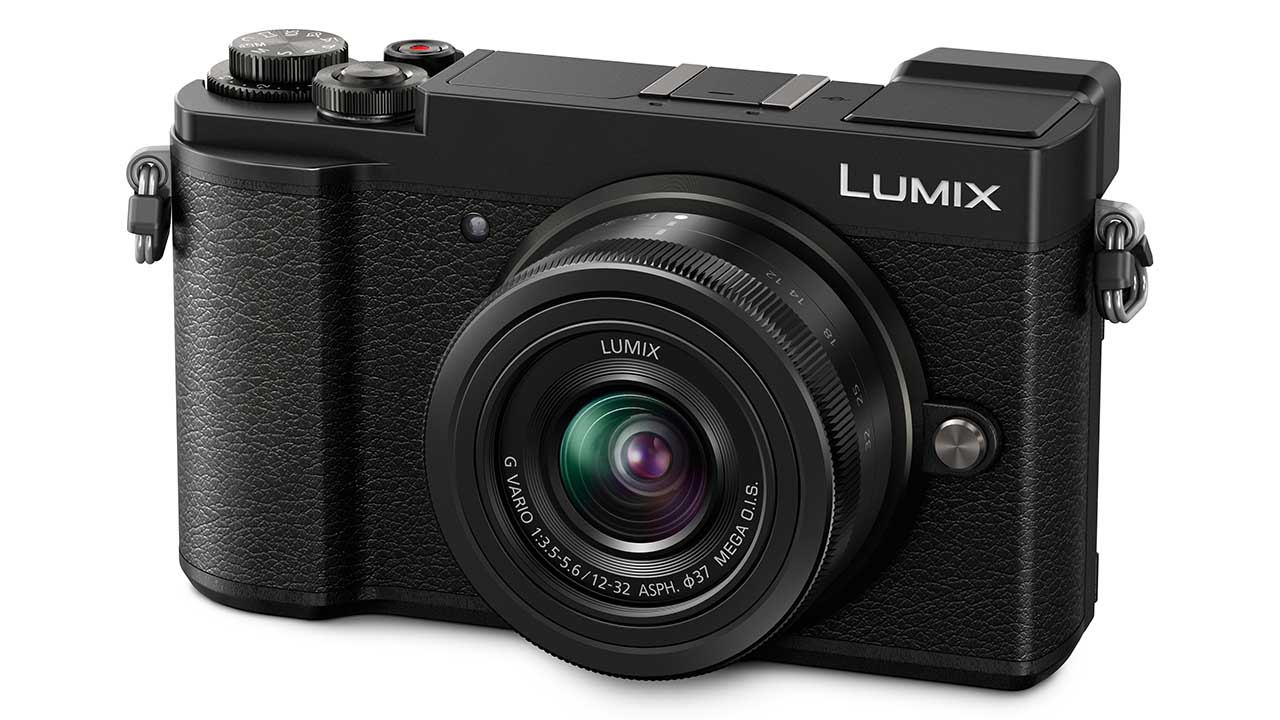
Specification
- Sensor: 20.3-megapixel Micro Four Thirds
- Stabilisation: Sensor-Shift, 5-Axis
- Sensitivity: 200 to 25600 (Extended: 100 to 25600)
- Video: UHD 4K (3840 x 2160) at 24.00p/29.97p [100 Mb/s]
- Viewfinder: 2,760,000-dot EVF
- Monitor: 3-inch 1,240,000-dot tilting touchscreen
Panasonic introduced the GX9 to sit in the middle of its range as a “premium street photography camera”. With its small body size and flat rangefinder type design, it’s also ideally suited as a travel camera – especially if you already own another Micro Four Thirds camera.
It houses a 20.3 megapixel Four Thirds sensor, without an anti-aliasing filter for increased detail resolution.
It has a host of other appealing specifications, including a high-resolution tilting viewfinder, a tilting touch-sensitive LCD screen, 4K Photo and Video modes, and compatibility with the huge range of Micro Four Thirds lenses.
The look of the camera is also very stylish, without attracting too much attention when using it out and about, which is ideal. There’s a good mixture of buttons and dials on the camera, while the tilting screen is very handy for composing from awkward angles – I’m personally not too bothered about articulation for a camera like this (others may feel differently).
Overall image quality is very good, particularly in good or bright light. In lower light, watch out for a little loss of detail in places, and try to stick to as wide an aperture as possible. Colours are nicely reproduced, being natural while also vibrant, while focusing is generally quick and accurate.
£599
$997For
- Small and lightweight
- Nice colours
- Tilting screen is great for shooting at odd angles
Panasonic G9
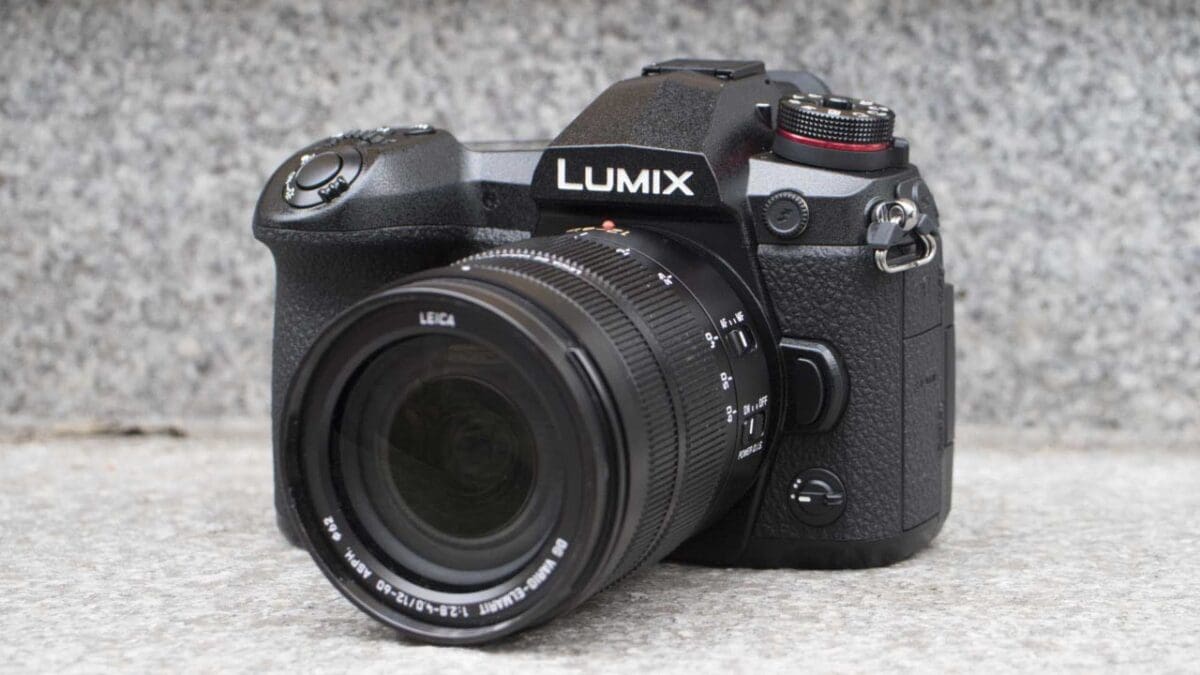
Specification
- Burst Mode (electronic shutter): 20fps with C-AF
- Burst Mode (electronic shutter): 60fps with S-AF
- Burst Mode (mechanical shutter): 9fps with C-AF
- Burst Mode (mechanical shutter): 12fps with S-AF
We’ve seen an escalation in continuous shooting rates recently with electronic shutters also allowing silent shooting. When the electronic shutter is in use, the G9 can shoot at up to 20fps (frames per second) with continuous autofocusing (AFC), that puts it level with the full-frame Sony A9. That’s good news for wildlife photographers who don’t want a clicking shutter to disturb their prey.
If you want to shoot faster still, the G9 can shoot full-resolution images at an incredible 60fps in single-AF mode, that is, with the focus set at the start of the sequence. That’s good news for shooting static action like water splashes or fleeting facial expressions.
At full-pelt, the G9’s buffer enables up to 50 raw files to be captured. If you switch to use the mechanical shutter, the maximum shooting rates drop to 9fps with AFC and 12fps with AFS, but the burst depth expands to 60 raw files.
In addition, Panasonic’s 4K Photo and 6K Photo modes are on hand with their convenient modes to help with capturing brief bursts of action. These modes use video technology to capture sequences of images which can then be extracted to create 8Mp (4K) or 18Mp (6K) still images.
The G9 can shoot 6K Photo images at 30fps for up to 10minutes. Alternatively, 4K Photo mode can be used at 60fps for 10 minutes or 30fps for a maximum of 30 minutes. Shooting for 10 minutes at 60fps produces a lot of 8Mp images!
£1499
For
- As fast as the Sony A9
- Excellent buffer
- Superb EVF and screen
- Stabilisation system rated at 6.5EV
- Weather-sealed
Olympus OM-D E-M1 Mark III
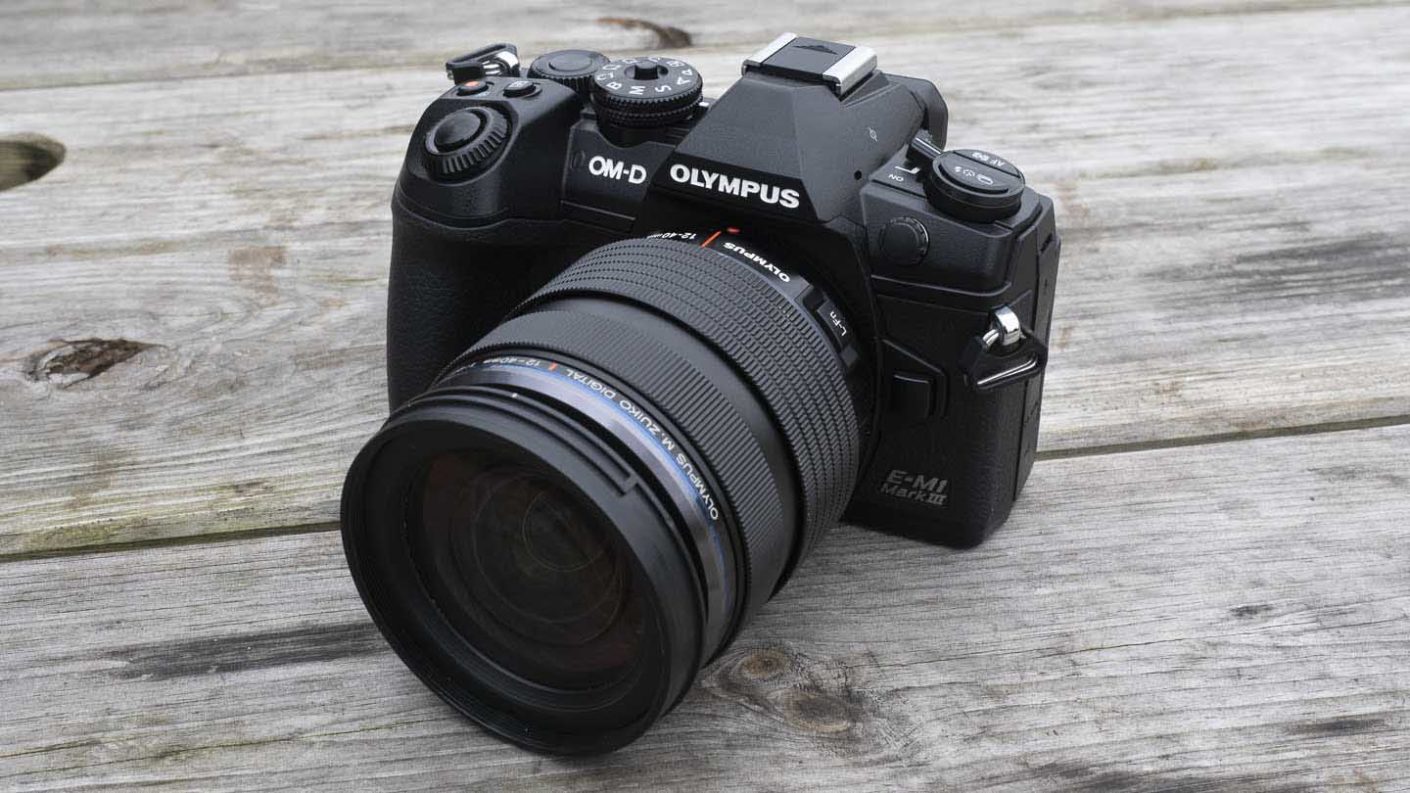
Specification
- Camera type: Mirrorless
- Lens mount: Micro Four Thirds
- Sensor: Four Thirds type 20.4 MP Live MOS sensor
- Announced: 12th February 2020
- Processing engine: TruePic IX
- Autofocus system: Hybrid with 121-point all cross-type focus points
- Max continuous shooting rate: 18fps AF/AE mechanical shutter (C-AF), 60fps in electronic shutter (S-AF)
- Max video resolution: C4K (4096 x 2160) at 30/25p
- Viewfinder: 2,360,000-dot electronic viewfinder
- Sensitivity range: ISO 64-25,600
- Screen: Vari‑angle 3-inch 1,037,000-dot touchscreen
- Storage: 2x SD/SDHC/SDXC (1 UHS-I and 1 UHS-II)
- Dimensions (LxHxW): 134.1 x 90.9 x 68.9mm
- Weight: 504g body only, 580g with battery and SD card
Some of the new features in the E-M1 III come as a result of the uprated processing engine. Live ND mode, for example, uses similar technology to Live Composite mode, but it enables you to preview the impact of a long exposure.
That demands a lot of processing power, but it’s a useful feature for landscape and creative photography. It also means that you don’t need to carry any ND filters with you as the exposure can be extended by up to 32x using the camera’s inbuilt system.
Olympus has given the OM-D E-M1 III’s sensor a new coating, which was introduced with the E-M1X. This reduces the likelihood of dust sticking, making the advanced SSWF (Super Sonic Wave Filter) technology, which vibrates the filter over the image sensor filter 30,000 times per second, even better at keeping the sensor clean.
In some respects the Olympus OM-D E-M1 Mark III might look like a fairly modest upgrade from the OM-D E-M1 Mark II. However, it feels more refined and has some great features that make shooting in tricky conditions a little easier.
It also enables photographers to travel lighter, not just by being relatively small and light itself, but by allowing tripods and ND filters to be left behind in many situations.
Olympus also offers an extensive array of superb lenses and the 2x focal length magnification factor is especially useful for sport and wildlife photographers. While existing OM-D E-M1 Mark II may not want to upgrade, the OM-D E-M1 Mark III makes a very attractive option for enthusiast photographers looking to switch to a mirrorless camera.
£1600
$1499For
- Compact size with vari-angle screen
- Great feature set
- Excellent lens range
Olympus OM-D E-M5 Mark III
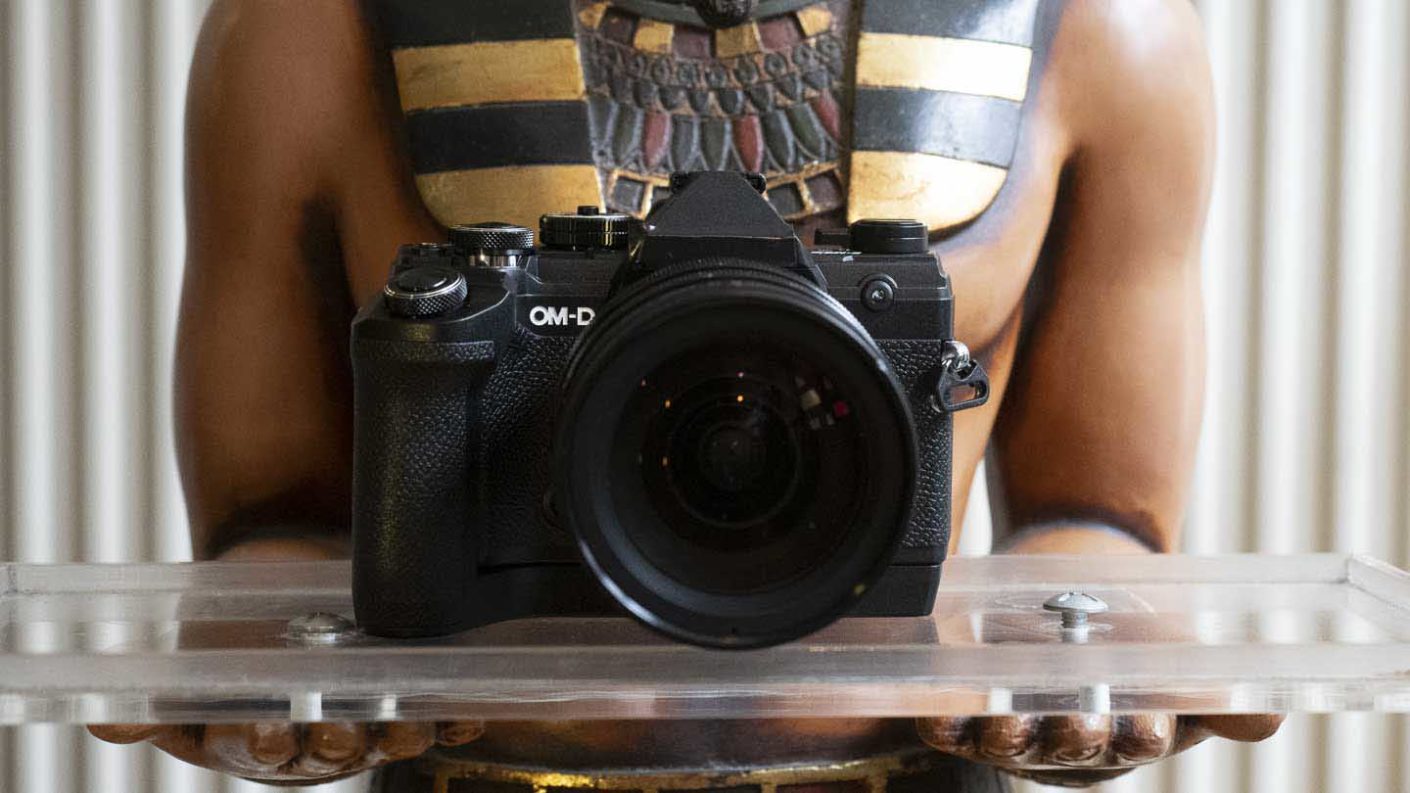
Specification
- Camera type: Mirrorless camera
- Sensor: 20.4Mp Live MOS Micro Four Thirds sensor
- Lens mount: Micro Four Thirds
- Processing engine: TruePic VIII
- Sensitivity range: ISO 64-25,600
- Autofocus system: Hybrid with 121 (all cross-type) phase-detection AF points
- Maximum continuous shooting rate: Mechanical shutter: 10fps with focus and exposure fixed at the start of the burst, 6fps with C-AF, Electronic Shutter 30fps and 10fps
- Max video resolution: C4K 24p at up to 237Mbps / 4K 30p, 25p, 24p at 102Mbps
- Live Bulb Shooting Options: Live Composite, Live Time, Live Bulb, Focus Bracketing, Focus Stacking, 50Mp High Res Shot modes
- Viewfinder: 2,360,000-dot electronic viewfinder
- Screen: Vari‑angle 3.0-inch 1,037,000-dot touchscreen
- Dimensions (W x H x D): 125.3 x 85.2 x 9.7mm
- Weight: 414g including battery and memory card, 366g body only
The Olympus OM-D E-M5 Mark III sits below the OM-D E-M1 Mark III in Olympus’s interchangeable lens camera lineup. It has a smaller body, which makes it a great choice for travel. It also produces nice images and the stabilisation system is incredible, enabling you to hand-hold the camera and get sharp images with exposures measured in whole seconds. In addition, it does a good job with video; although if you’re really serious about shooting moving images you might want to look at the Panasonic Lumix G90 which has a true Log mode.
Olympus has given the E-M5 Mark III the same 20.4Mp Live MOS sensor as the OM-D E-M1 Mark II. The processor is also listed as the same TruePic VIII engine, but Olympus tells us it’s been updated for a bit more oomph.
Like the OM-D E-M1 II, the OM-D E-M5 III has a 121-point (all cross-type) phase-detection autofocus (AF) system. There are also clever shooting options such as Live Composite, Live Time, Live Bulb, Focus Bracketing, Focus Stacking and a 50Mp High Res Shot mode.
As with its predecessor, the OM-D E-M5 II, the High-Res Shot mode is a tripod-only option. When this mode is activated, the E-M5 III shifts the imaging sensor by 0.5-pixel movements between 8 shots. These are then merged into one image that’s equivalent to 50Mp.
Olympus has upgraded the video capability of the OM-D E-M5 Mark III in comparison with the Mark II model. The new camera is capable of shooting C4K 24p video at up to 237Mbps or 4K 30p, 25p, 24p video at 30p 102Mbps.
What’s more, Full-HD video can be shot at up to 120p for slow-motion playback.
Read our buyer’s guide to the best Olympus cameras
£1100
$1199.99For
- Images full of detail
- Low noise at higher ISOs
- Superb stabilisation
Olympus OM-D E-M10 Mark IV
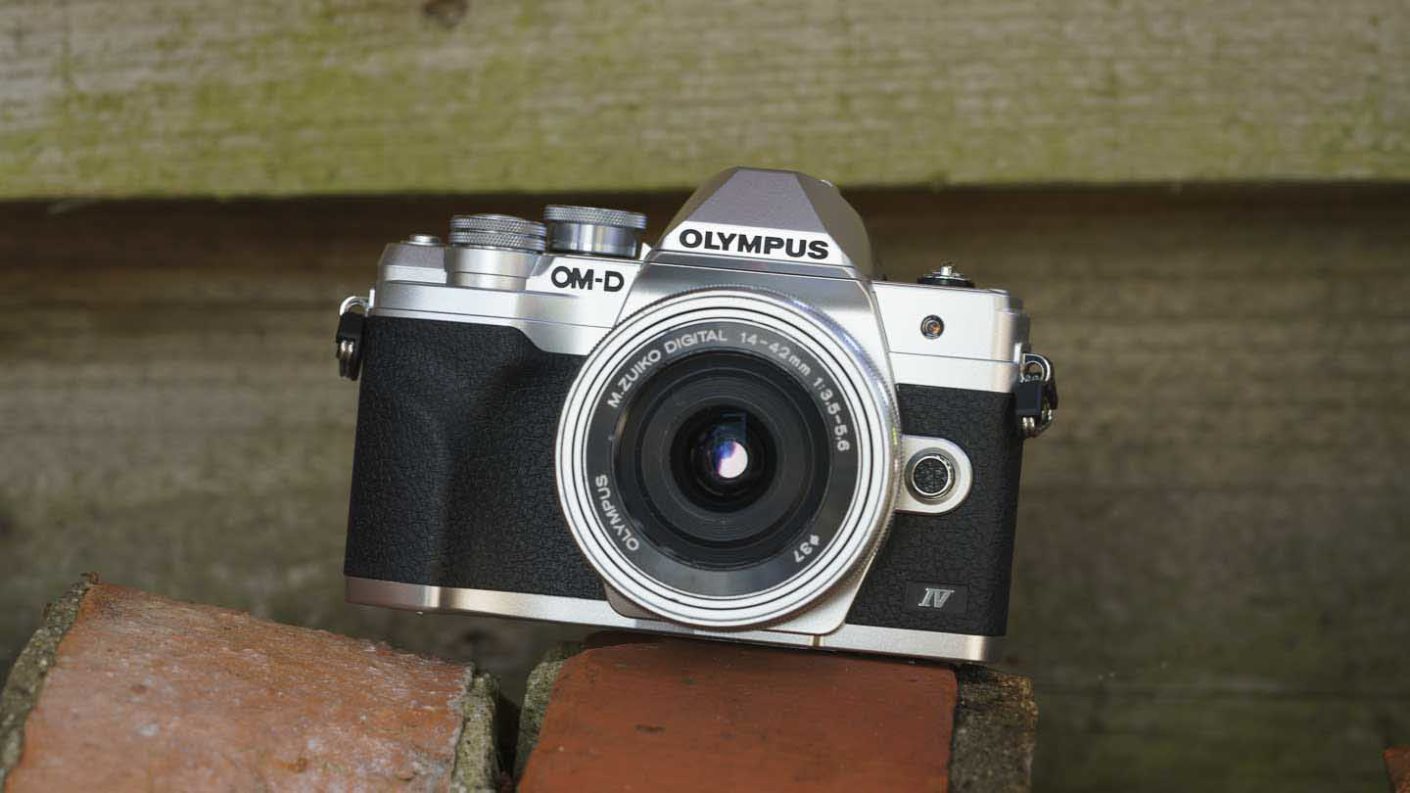
Specification
- Camera type: Micro Four Thirds mirrorless
- Announced: 4th August 2020
- Sensor: Four Thirds Type 20.3Mp Live MOS
- Processing engines: TruePic VIII
- Sensitivity range: ISO 80-25,600
- Viewfinder: 2,360,000-dot electronic with 1.23x magnification and 19.2mm eye point
- Stabilisation: 5-axis with up to 4.5EV shutter speed compensation
- Screen: 3-inch 1,037,000-dot tilting touchscreen
- Focus modes: Manual focus, Single AF, Continuous AF, Single AF + MF, AF Tracking, Super Spot AF, Face Detection AF
- Exposure modes: Programme, Aperture priority, Shutter priority, Manual, Bulb, Time, i-Auto, Scene Modes, Art Filter, Movie, Live Time, Live Composite, Advanced Photo Modes (Live Composite, Live Bulb, Multiple Exposure, HDR Backlight, Silent, Panorama, Keystone Compensation, AE bracketing, AF bracketing)
- Autofocus system: Contrast detection with up to 121 points
- Autofocus point selection modes: All target, Group target (9-areas), Single target
- Exposure metering: 324 zones Multi-pattern Sensing System with ESP, Spot, Centre weighted, Highlight and Shadow mode
- Art filers: Pop Art, Soft Focus, Pale & Light Colour, Light Tone, Grainy Film, Pin Hole, Diorama, Cross Process, Gentle Sepia, Dramatic Tone, Key Line, Water colour, Vintage, Partial Colour, Bleach Bypass, Instant Film
- Shutter speed: 1/16,000-60sec, Bulb to 30mins
- Maximum continuous shooting rate: High: 15 fps Low: 6.3 fps, Max. number of frames: High 42 raw files or 49 (LF) JPGs, Low: 945 raw files or until the card is full with (LF) JPGs
- Video resolution: 4K (3840 x 2160) / 30p, 25p, 24p / IPB (approx. 102 Mbps) Full HD (1920 x 1080) / 30p, 25p, 24p (MOV) Full HD (1920 x 1080) / 60p, 50p / IPB (F,N) / (MOV) HD (1280 x 720) / 60p, 50p, 30p, 25p, 24p (MOV)
- Time lapse: 4k, 1080p, 720p
- Flash: Built-in GN 7.2 (ISO200), hotshoe for external flash
- Connectivity: Wi-Fi, Bluetooth
- Multiple exposure: 2 frames with or without autogain
- Storage: SDHC/SDXC UHS-II
- Dimensions (WxHxD): 121.7x84.4x49mm
- Weight: 383g including battery and SD card
Although the Olympus OM-D E-M10 Mark IV can hide amongst compact cameras with smaller sensors, it’s a mirrorless camera that accepts lenses with the Micro Four Thirds mount.
Like other Olympus OM-D camera such as the Olympus OM-D E-M5 Mark III, it has mini-DSLR styling with its 2,360,000-dot electronic viewfinder at the centre of the top plate. There’s also a 3-inch 1,037,000-dot touch-sensitive LCD on the back of the camera that can be tilted up or down for easier composition of landscape orientation images from above or below head height. This can be flipped down through 180° to make it visible from in front of the camera, making it ideal for shooting selfies or vlogging.
Mounting the camera on a tripod obscures the screen when it’s forward-facing, but thanks to the in-body stabilisation, you don’t need to use a tripod very often.
Despite its ‘entry-level’ status, the OM-D E-M10 IV has some advanced features such as Olympus’s excellent Live Composite and Live Time modes that make shooting long exposure images and light painting much easier than normal.
You can find the best deals on the Olympus OM-D E-M10 Mark IV at Amazon UK and Amazon US.
£699
$649For
- Very compact, yet versatile camera
- Tilting screen can face forwards for selfies and vlogging
- Live Composite and Live Bulb mode make long exposure photography easy
Medium format mirrorless cameras
Mirrorless medium format cameras have image sensors that are larger than those in so-called ‘full-frame’ cameras, but the actual size of the sensor varies. For ease of comparison, the surface area of a full-frame sensor is 864mm². The Fuji GFX 50S sensor is 1,441mm². That’s over 66% larger.
A key benefit of this is that the pixels can be made larger than on small format sensors. This means they gather more light. More light means, less noise and higher quality images.
For more on this and the advantages of shooting medium format, check out our guide on medium format photography.
Fujifilm GFX100S
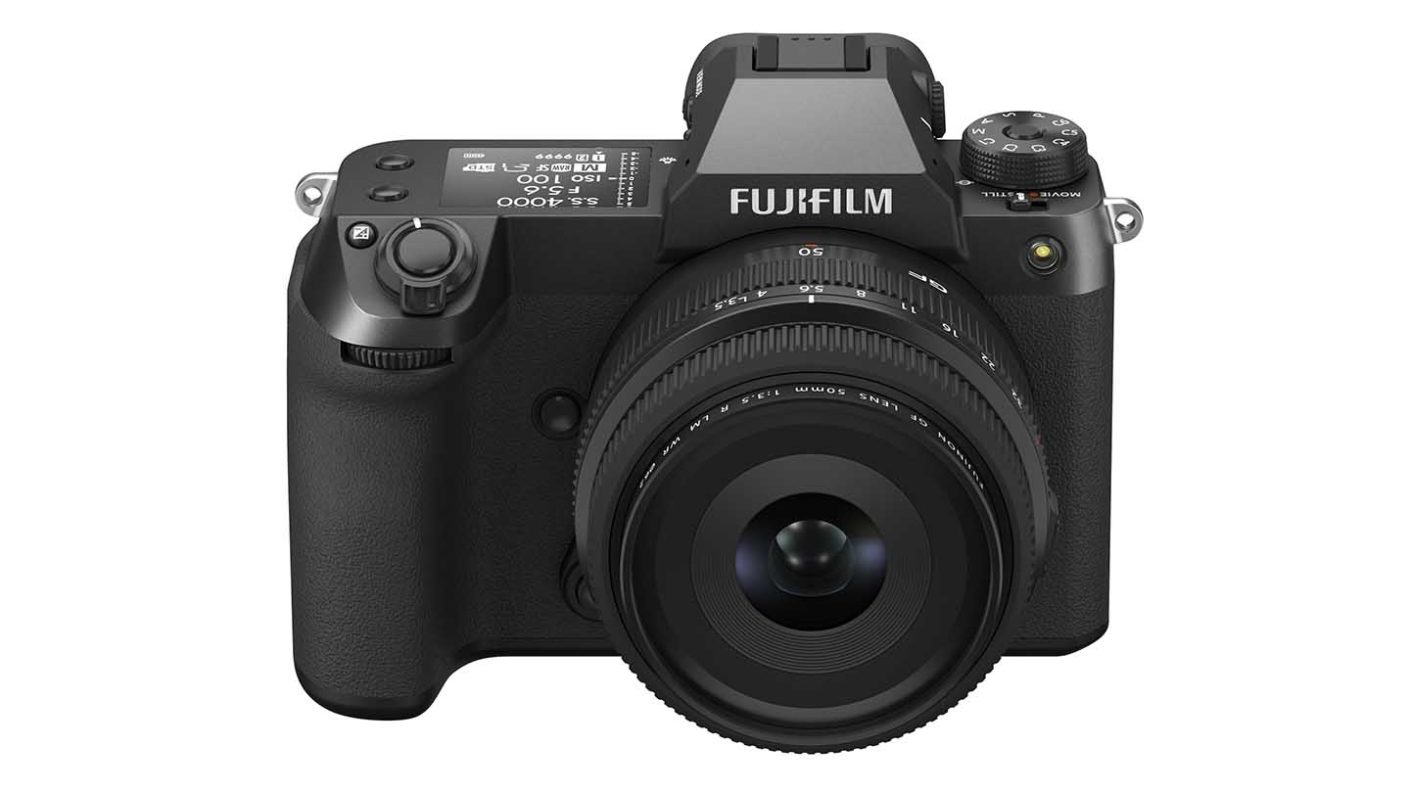
Specification
- Camera type: Medium format mirrorless
- Announced: 27th January 2021
- Sensor: 102Mp Medium format (43.8 x 32.9mm) CMOS with Bayer colour filter array
- Maximum image size: 11648 x 8736
- Processor: X Processor 4
- Lens mount: Fujifilm G
- Autofocusing: Intelligent Hybrid with up to 425 AF points
- Autofocus system: Intelligent Hybrid AF (contrast AF / phase-detection AF) with up to 425 selectable AF points
- Viewfinder: Fixed 0.5-inch 3.69million-dot EVF with 0.77x magnifications 85fps
- Screen: 3-direction tilting 3.2-inch 2.36million-dot touchscreen
- Continuous Shooting: 5fps for 42Jpegs, 16 compressed raw, 15 lossless compressed raw or 14 uncompressed raw
- Sensitivity range: Standard ISO 100-12,800, expandable to ISO 50-102,400
- Image stabilisation: In-body 5-axis giving 6EV compensation, Plus Digital IS and IS Boost for video
- Max video resolution: 4K (4096×2160) 29.97p 400Mbps up to 120min recording, Digital IS (1.1x crop), F-Log, HLG, ProRes Raw (12-bit HDMI)
- Film Simulation Modes: 19 modes: Provia/Standard, Velvia/Vivid, Astia/Soft, Classic Chrome, Pro Neg.Hi, Pro Neg.Std Classic Neg., Nostalgic Neg., Eterna/Cinema, Eterna Beach Bypass, Acros, Acros + Ye Filter, Acros + R Filter, Acros + G Filter, Black & White, Black & White + Ye Filter, Black & White + R Filter, Black & White + G Filter, Sepia
- Storage: SD/SDHC/SDXC UHS-II
- Battery: NP-W325 460 images
- Dimensions: 150 x 104 x 44mm
- Weight: 900g including battery and card
The Fujifilm GFX100S is a medium format camera that doesn’t feel like a medium format camera. With the right lens, it can blend in with full-frame DSLR and mirrorless camera yet it has a sensor that’s 1.7x the size.
It has the same 102Mp back-illuminated CMOS sensor as the Fujifilm GFX100, which means it can produce images that measure 98.62 x 73.96cm or 38.8 x 29.1-inch when printed at 300ppi. And there’s Fujifilm’s Pixel Shift Multi Shot mode that enables it to produce 400Mp images with a little help from a computer running Fujifilm’s Pixel Shift Combiner software.
If you look at images shot at the top native sensitivity setting of ISO 12,800 at 100% on screen, you’ll see a fair amount of luminance noise in the raw files, but as you zoom out, it disappears and there’s a long way to zoom out! Of course it depends what you want to do with your images, the the Fujifilm GFX100S is one of the few cameras that we’d feel reasonably happy about using the upper sensitivity expansions settings.
While the GFX100S’s AF system is a bit fidgety, it’s responsive and can get moving subjects sharp. The Eye AF isn’t the best around, but it’s useful for portraits and the level of detail captured in low to mid-range ISO images is fantastic.
£5499
$5999 / €5999For
- Superb sensor
- Phase detection autofocus system
- Small for medium format





Leave a Reply